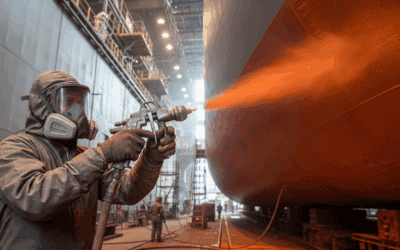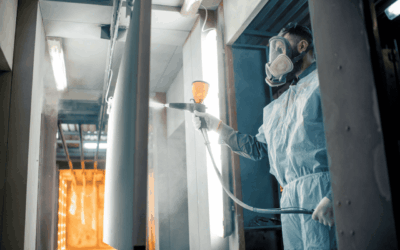How to Avoid Spray Gun Blockages
Few things are more frustrating for decorators and painters than a blocked paint sprayer.
Spray gun blockages disrupt workflow, waste materials, and can leave you with uneven finishes. Luckily, most clogs are preventable with the right preparation and maintenance. This guide looks at the most common causes of spray gun clogs and offers practical spray gun troubleshooting tips to keep your projects on track.
Common causes of spray gun blockages
Understanding why spray guns become blocked is the first step in avoiding downtime.
- Unfiltered paint or coatings: Skipping filtration allows dirt, dried paint, or other debris into the system. These particles can quickly clog the nozzle.
- Incorrect thinning or mixing: Paints that are too thick for the spray gun will struggle to flow, leading to uneven spraying and potential blockages.
- Dried paint build-up: Failing to clean your spray gun properly between uses leaves residue inside the nozzle, tip, and passages. Over time, this hardens and restricts flow.
- Worn or damaged parts: Old tips, needles, or seals can trap paint or allow it to dry unevenly, contributing to clogs.
How to prevent spray gun clogs
Prevention is always easier than dealing with a blocked paint sprayer mid-job. Here are some simple steps to reduce the risk:
- Filter your paint: Strain coatings before pouring them into the cup or hopper.
- Check viscosity: Follow manufacturer guidelines for thinning to ensure smooth flow.
- Clean regularly: Flush the spray gun with the correct solvent after each use and wipe down all removable parts.
- Inspect components: Check tips, needles, and seals for wear and replace them when necessary.
- Store correctly: Keep spray guns dry and clean when not in use to prevent build-up.
Troubleshooting a blocked paint sprayer
If you’re already facing spray gun blockages, don’t panic! Try these quick fixes:
- Stop spraying immediately: Forcing paint through can damage the gun.
- Relieve pressure: Safely depressurise the system before attempting any cleaning.
- Clean the nozzle: Remove the tip and soak it in solvent, then clear with a soft brush.
- Flush the system: Run the recommended cleaner through the gun to clear passages.
- Check for damaged parts: Replace worn tips or seals if cleaning doesn’t solve the issue.
Final thoughts
Spray gun blockages can slow down even the most experienced sprayer, but with the right maintenance and preparation, they’re easily avoided. By filtering paint, cleaning thoroughly, and checking for wear, you’ll keep your spray gun working reliably and your finishes looking professional.
Keep your spray equipment performing at its best — explore our full range of professional spray solutions today.



